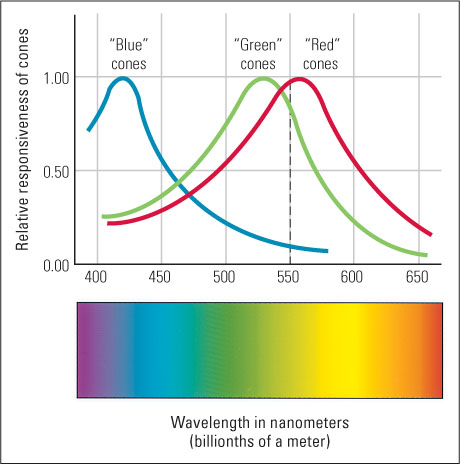
Figure 8.7 How the three types of cones respond to different wavelengths of light Any given wavelength produces a unique ratio of activity in the three cone types, and that ratio provides the initial code that permits us to see different wavelengths as different colors. For example, a 550-nm light, which is seen as greenish-yellow, produces a slightly larger response in “red” cones than in “green” cones and very little response in “blue” cones. Any combination of lights that would produce that same ratio of responses would be seen as greenish-yellow. For precise data, see Bowmaker & Dartnall, 1980, or Merbs & Nathans, 1992.